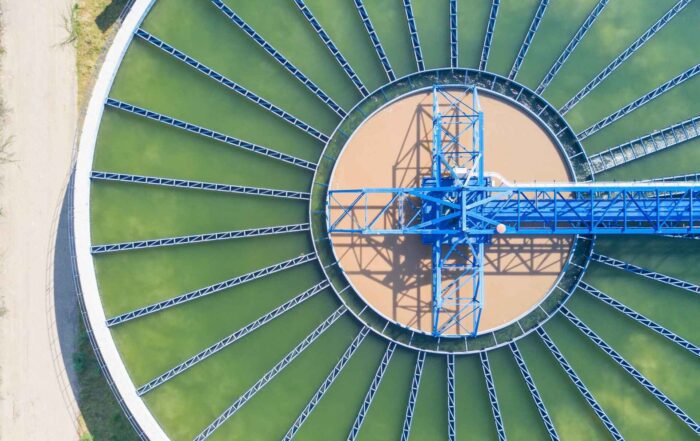A notable floating liquefied natural gas (FLNG) facility, operated by a major international oil and gas company, is situated off the coast of Australia. The facility is engineered to extract and liquefy natural gas at sea before being transported to land. As one of the world’s largest floating offshore facilities, it is designed to tap into offshore gas fields, process the gas on board and then offload the liquefied natural gas (LNG) to ships. It is meticulously engineered for remote and harsh environments, operating with minimal environmental impact.
Ambition: High Reliability
The offloading arms of this floating LNG facility are vital for its business performance. These assets should work at the small window of opportunity that they have to offload liquid cargo at sea to other vessels. Additionally, with an FLNG facility the feet on deck should be kept at a minimum. Both of these constraints necessitate a high reliability and availability of these assets. While the installation is relatively new, the team wanted to optimize its maintenance strategy in order to prevent the asset to be prone to unacceptable unplanned downtime. MaxGrip was asked to help based on our long partnership with this oil and gas supermajor around the globe. MaxGrip is well versed in their internal processes and the consultants have wide domain knowledge of maintenance and inspection strategies.
Approach: Reliability Centered Maintenance
The MaxGrip consultants applied Reliability Centered Maintenance on the assets.
Step 1. Criticality Analysis
The team performed a criticality analysis on the assets. They prioritized the assets based on their importance and the consequences of their failure. This includes considering factors like safety risks, environmental impact, operational downtime, and repair costs. The assets were assigned a criticality score based on the likelihood and severity of failure. The outcome was validated with the company’s internal experts from different departments including maintenance, inspection and operations.
Step 2. Assign Maintenance Strategies
- Preferred Strategy: Condition Based Monitoring
Are we able to measure the critical failure mode of the asset (e.g. by using existing sensors or by applying other new techniques)? - Inspection by Operators
If measuring the asset condition is not possible, we consider having operators inspect the condition of the asset. This is an option if the operator can do the work as part of his regular inspection rounds, if the work is feasible for the operator (e.g. the asset can be inspected and a specialist is not needed). - Preventive Maintenance in Planned Downtime
If both of the above options are not possible, we will perform preventive maintenance on the critical asset between two offloading cycles (or in a turnaround).
Step 3. Clustering of Maintenance Plans
Based on the analysis and considerations as stated above, the MaxGrip team formulated the new preventive maintenance plans (and work instructions) for the assets which are based on their criticality and prioritization. These plans were then clustered together with existing plans in such a way that execution would be feasible, keeping in mind all of the constraints for offloading arms on such a FLNG.
The plans are handed over to the client’s team who will then take care of the execution of the maintenance strategies.
Optimization of SAP EAM system
For the same FLNG, a large MaxGrip team works remotely on the improvement of the SAP PM implementation. In this way, the organization is able to put more trust in the system’s data and processes. This includes getting insights into risks and safety critical equipment which offers the company more control. Additionally, SAP PM is made ready to easily migrate to SAP S4HANA. The long-term project will continue to at least 2026.
Results: 10-15% Decrease of Manpower
The project for the optimization of maintenance strategies for the offloading arms is still ongoing. Although the installation is relatively new, the availability and reliability need to be optimal, now and in the future. With these maintenance strategies and way of working, we expect that the reliability and availability of these critical assets are kept at a high level.
Moreover, the man power used to maintain these assets can decrease with an estimated 10-15%. This is of critical importance with a FLNG where feet on deck is one of the most important constraints for executing work on location.
Get inspired
We share our view on 25 years of maintenance and asset performance management.
Best practices and learnings about SAMP, AMPs and LTAP at two Dutch water authorities
Media interview with MaxGrip consultants about Clustered Maintenance: a futureproof and fun way of working for maintenance





